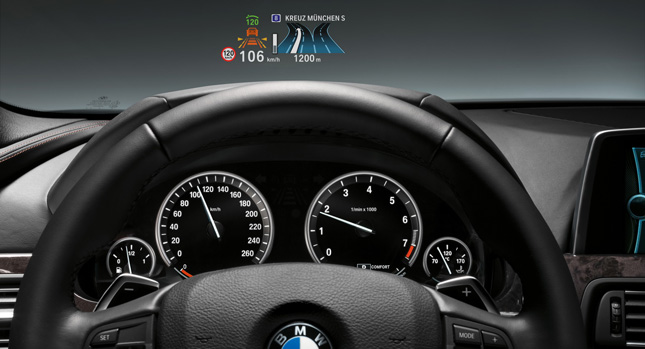“War is the father of all things”: the sentence that was uttered by Heraclitus 2,500 years ago remains true today. Throughout the years, technology developed mainly for war machines has trickled slowly, but steadily, down to everyday applications.
The Head-Up Display [HUD] system used in military jets is a prime example. Launched initially in 1958 to keep vital information in the pilot’s line of sight, in the ‘70s it was adopted by general aviation.
And in January 2004, BMW became the first European car manufacturer to give its customers a HUD as an option. Drivers of the 5-Series could keep their eyes at all times on the road while still obtaining all essential information like speed, rpms etc.
BMW says that a normal driver takes his eyes of the road for at least a second in order to look at the instrument cluster or the navigation screen. During that time, even with a low speed of 50 km/h (31 mph), his car has already covered 14 meters without him or her paying attention.
Apart from eliminating the need to take one’s eyes of the road, BMW says that HUD technology also reduces the time the driver needs to assimilate the info displayed by more than 50%.
On jet fighters, flight data is directed to the canopy via mirrors – and then, in order to reduce reflections, is displayed on a vertical panel in the pilot’s line of vision.
BMW has found this solution impractical for automotive use. Therefore it has integrated an water-thin foil into the windscreen, allowing the driver to have a clear view of the data.
In addition, the automotive HUD, which will also be offered on the new 3-Series, has one significant advantage over the military: in its latest iteration, it displays information in different colors, helping drivers easily distinguish between the data, whereas pilots have to do with monochrome displays.
PHOTO GALLERY











